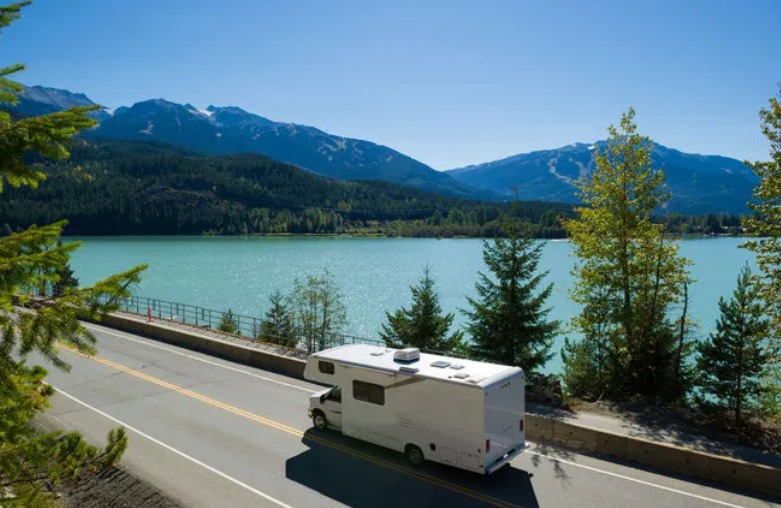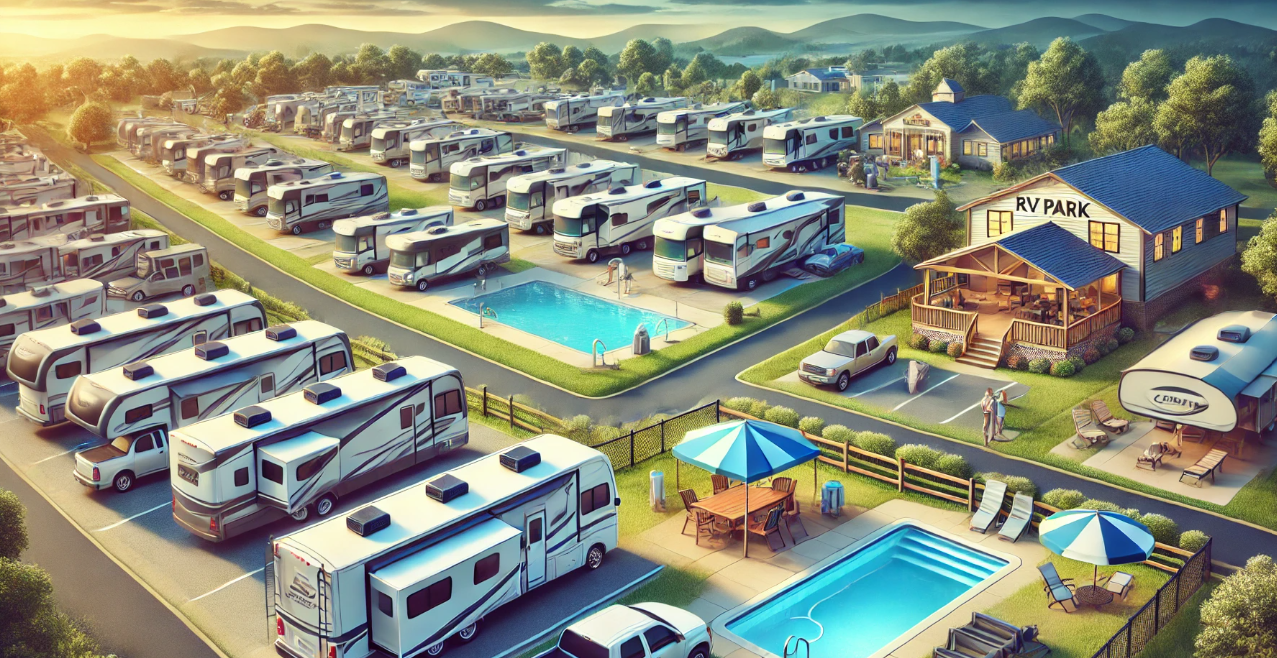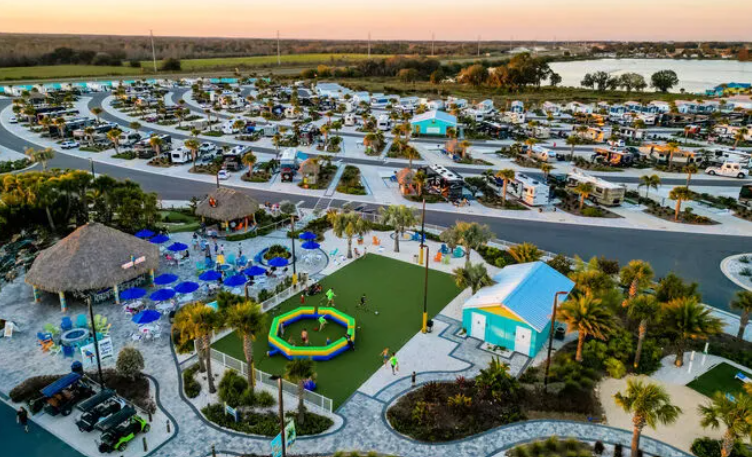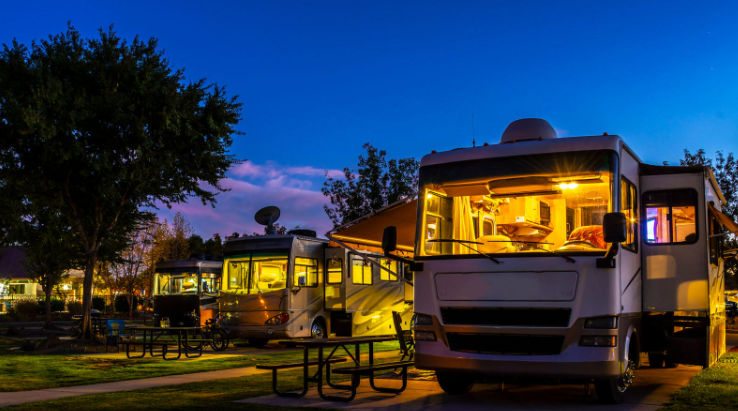RV travel is a fantastic way to explore the United States, offering freedom and flexibility combined with the comfort of home on wheels. However, many RV enthusiasts have noticed a steady rise in the cost of staying at RV parks. Let’s break down the key reasons why RV parks have become so expensive and what factors contribute to these increasing prices.
1. Infrastructure Modernization and Maintenance
⦁ Maintaining an RV park is not as simple as providing a parking lot. Many parks require regular maintenance and upgrades to keep up with modern RV standards. These expenses often include:
⦁ Electrical upgrades: Many newer RVs require 50-amp service, while older parks may only offer 30-amp connections.
⦁ Water and sewage systems: Ensuring clean water and efficient waste management requires constant investment.
⦁ Road and campsite repairs: Wear and tear from heavy RVs mean frequent resurfacing of roads and leveling of sites.
According to the National Park Service (NPS), U.S. national parks face a nearly $332 million backlog in campground maintenance alone, driving the need for higher fees.
2. Increased Demand and Limited Capacity
The RV industry has seen a boom, with over 11.2 million U.S. households owning RVs as of 2024 — a 26% increase over the past decade. Despite this surge, the availability of RV park spaces hasn’t kept pace.
⦁ National parks offer around 27,513 campsites spread across 1,421 campgrounds (National Park Service), creating a supply-and-demand imbalance.
⦁ High demand during peak travel seasons allows park operators to raise their prices.
3. Enhanced Amenities and Services
Modern RV parks are more than just basic campgrounds. Today’s RVers expect amenities such as:
⦁ Wi-Fi and cable TV hookups
⦁ Swimming pools, playgrounds, and dog parks
⦁ Laundry facilities and clean bathhouses
⦁ On-site convenience stores and recreational activities
Providing these services requires continuous investment, pushing park owners to increase fees to cover costs.
4. Economic Factors and Rising Operational Costs
Just like any other business, RV parks face operational expenses like:
⦁ Property taxes
⦁ Insurance
⦁ Employee wages
⦁ Utility bills (electricity, water, waste management)
Inflation has further driven up these costs, leaving park owners with no choice but to pass some of the burden onto guests.
5. Government Regulations and Fees
Parks on public lands often have to comply with state and federal regulations, such as environmental standards and building codes.
The Federal Lands Recreation Enhancement Act (FLREA) allows agencies like the Bureau of Land Management (BLM) and NPS to charge recreation fees. These funds are then reinvested into park maintenance and improvement — but they also mean higher visitor fees.
6. Privatization and Commercial Partnerships
To tackle maintenance backlogs, some public campgrounds have partnered with private companies. While this can result in better facilities, it often leads to price hikes, as private operators aim to make a profit. The RV Industry Association (RVIA) advocates for such partnerships to modernize public campgrounds.
7. Location and Seasonal Pricing
RV parks near popular destinations — such as national parks, beaches, and tourist hotspots — charge premium rates due to high demand. Seasonal variations also play a role:
⦁ Peak season (summer, holidays): Prices can skyrocket.
⦁ Off-season: Discounts may be available, but services might be limited.
For example, staying at an RV park near Grand Canyon National Park will cost significantly more than a remote campground in the Midwest.
8. Environmental Considerations
Many parks invest in eco-friendly solutions like solar panels, rainwater harvesting, and sustainable waste management systems. These green initiatives add to operational costs but appeal to environmentally-conscious travelers.
SOURCE LINK : Recreation.gov
FAQs About RV Parks in the US
1. How do you start an RV park?
⦁ Secure a minimum of 3 acres of land.
⦁ Divide the land into sites at least 1,000 square feet each.
⦁ Ensure proper utility hookups (electricity, water, sewage).
⦁ Check zoning laws and building codes.
⦁ Invest in amenities to attract more guests.
2. Are RV parks safe?
⦁ Generally, yes. However, location matters.
⦁ Premium parks often have gated entries and security.
⦁ Older or remote parks may have fewer security measures.
3. Will RV parks allow tiny homes?
⦁ Many parks accept tiny homes as long as they meet RV classification standards.
⦁ Some parks specifically cater to park model homes — larger, semi-permanent units.
4. How profitable are RV parks?
⦁ Highly profitable with high occupancy rates and minimal operational costs.
⦁ Location, amenities, and effective management are key factors.
5. What are the costs of living in an RV park?
⦁ Nightly rates: $20–$70+
⦁ Monthly rates: $500–$1,500, depending on location and services.
⦁ Additional fees for Wi-Fi, utilities, and amenities may apply.
6. Can you stay overnight at rest stops instead of an RV park?
⦁ Some Walmart locations and highway rest areas allow free overnight stays.
⦁ Always check local rules and signage.

Conclusion
The rising cost of RV parks in the US reflects a blend of modernization, increased demand, and economic realities. While these expenses ensure quality experiences for travelers, they also pose challenges for budget-conscious RVers. Planning ahead, researching off-season rates, and exploring public lands can help mitigate some of these costs.
Happy RVing!





